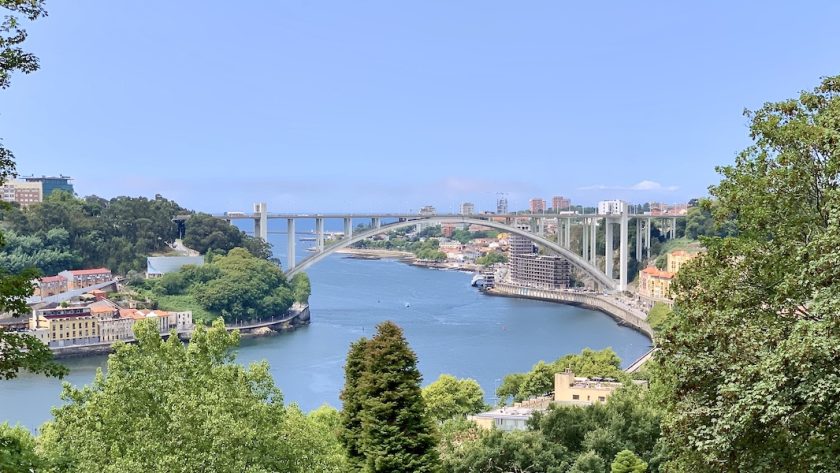While I’m thoroughly enjoying my time in Seattle, food here is so expensive! To distract me from whingeing about prices, people ask me about the foods along my travels. Well, let me try to remember all the lovely noms from Portugal. I have this stupid autoimmune disease so I shouldn’t eat the glutens. That made it very difficult. Europe is like a breadbasket with so many delightful foods made from or thickened with wheat flour.
All things gluten
If you spend ten seconds searching for things to eat in Portugal, you will find so many pastries and smothered sandwiches and fresh-baked breads. None of which I can have without a couple weeks of upset stomach, headaches, and achy joints. The glutens might be delicious, but they are absolutely not worth the trouble. With that in mind, you won’t hear about any of those foods here. Sorry!

Lucky for me, Portugal is known for grilled fishes. Namely salted cod known as “bacalhau” and grilled whole sardines. You can pick off the meat from the skin and bones, but most people just eat the entire thing. You get a lot of calcium from eating the bones and they are very small, so you don’t have to worry about getting them stuck in your throat. I ate so many of these delights that I had fish burps. Then I was done.
The other thing that is so good in Portugal is the Spanish Tortilla. My friends in Peniche bought me one for my first day. Thanks, Friends! They sell these things in convenience stores for like three euros. It’s a round disk about an inch and a half thick of layer upon layer of eggs and potatoes and seasonings. You heat it up in a fry-pan with olive oil, then top with pimentos and hot sauce. This is one of my favorite breakfasts!
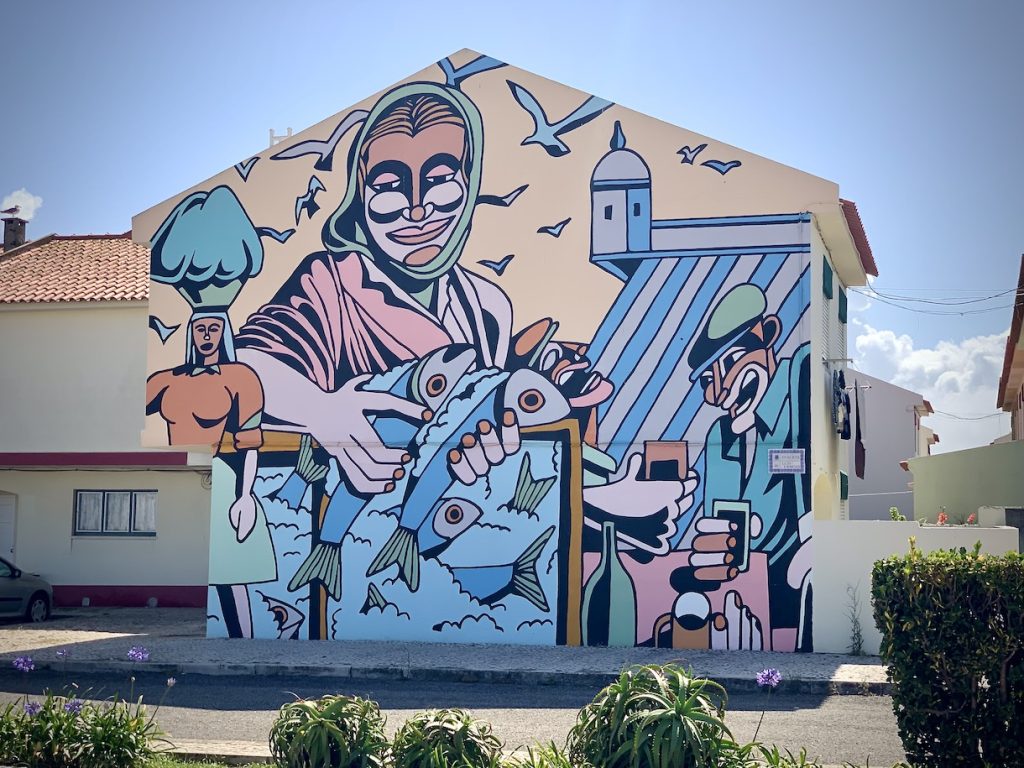
Let’s talk olives and oils
Portugal is a really great territory for growing grapes and olives. When I first got to the fruit market and saw all the vats of olives in various juices, oils, and herbs, I just about squeed! You just point to whichever type of olives you want and the vender fills a bag or bowl until you say when. I ate so many types of olives. And the bags usually only cost just over a euro.
With all those olives, they also make loads of olive oil. You have to really search the stores if you want an oil other than olive. Even then, it might be an olive oil blend. They have so many types and flavors and specific ones for different cooking temps. All this is in Portuguese, so deciding can be difficult. Lucky for me, my friends who I was visiting in Peniche picked me up a bottle on my first night there (for cooking the Spanish Tortilla!).
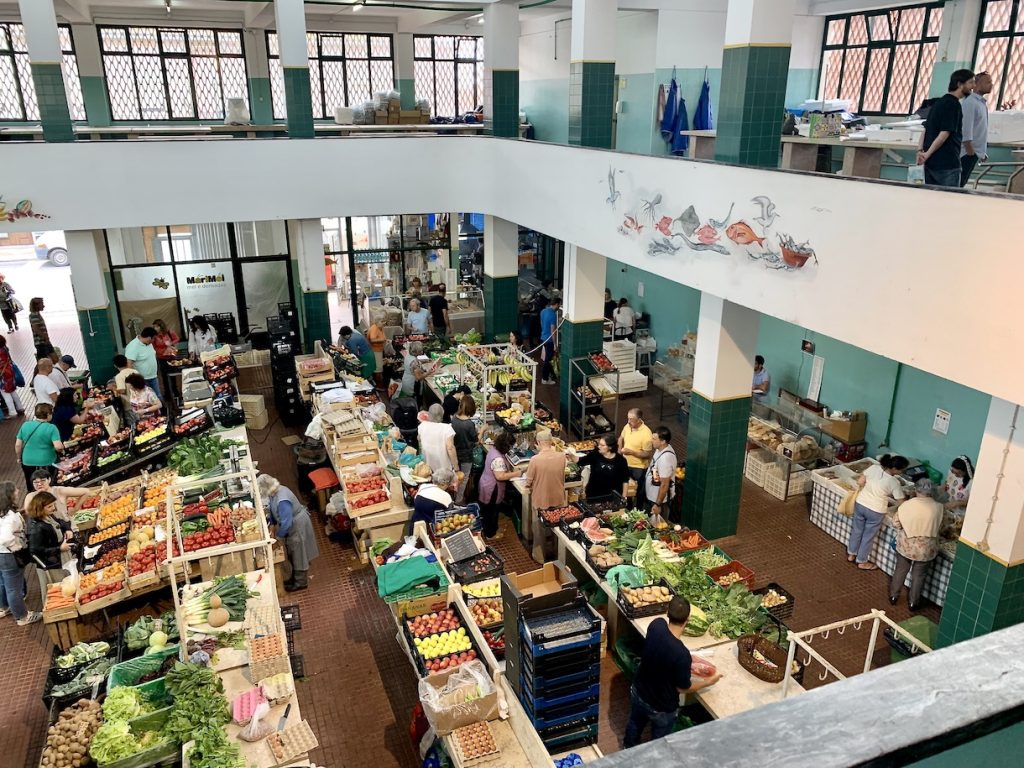
As for all the grapes grown in Portugal, wine was ridiculously inexpensive. They have five-liter boxes of really wonderful wine at the grocery stores for about nine euros. You get to a restaurant and see the prices and think that you are going to get a single glass of wine. Nope. That is for an entire bottle! Usually to share with the table, but you do you.
I wrote an entire blog about ports, so click here if you want to read about those lovely adventures!
Where is the white vinegar?
There I was, determined to find white vinegar with which to make Haitian cabbage slaw, pikliz, which I learned to make while in The Dominican Republic. It’s now my favorite slaw! Turns out in Portugal, white vinegar is just a cleaning agent with added perfumes to make it inedible. Like denatured alcohol, but with vinegar. But I need it! I tried using white wine and apple vinegars, but it is just not the same.
Finally, when I got to Porto, I could find some fairly expensive imported white vinegar in one of the Asian grocery stores. I was so excited! I immediately went to the fruit market to find these adorable cone-shaped cabbages, along with all the other needed ingredients for the slaw. Veg is so affordable, which makes up for the cost of white vinegar.
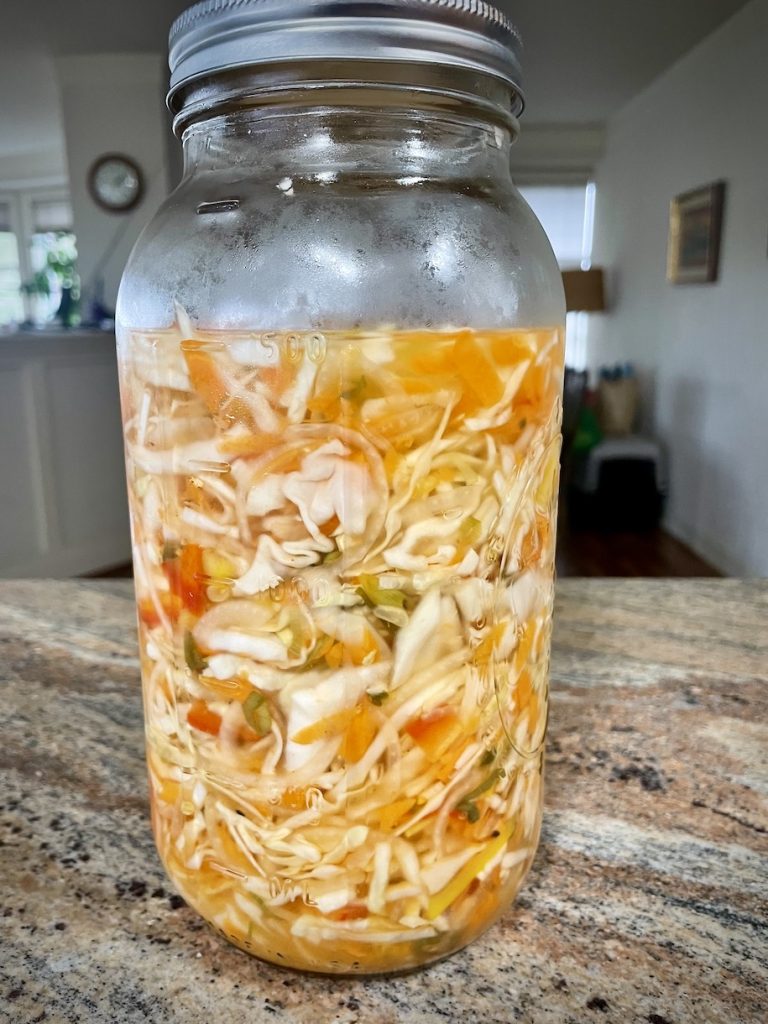

With my pikliz fermenting away on my countertop, I really got into arepas with shredded mojo chicken for breakfast. There is not much better than that. It’s a bit of a culture clash (Venezuela, Cuba, and Haiti) but it really works and it’s the same region-ish. I spent some time looking for air-chilled chicken because water-chilled is weird. Turns out, Europe imposed a ban on all immersion-chilled poultry, so it’s all air-chilled chicken with no need to put that on the label. Because of the ban, and how widespread the practice is, they even stopped importing any chicken from the United States. Interesting.
More meats and eggs
In the USA, you get some really serious guilt even thinking about eating veal. Those poor baby cows in tiny cages, unable to stand up or move about. That is not what veal is in Europe. They have serious laws against that kind of abuse. In Portugal, veal is just a young cow. Usually males from the dairy industry. The calves get to run around and play in fields. Some even get balls to kick around and play with. They just don’t get to live very long because they are delicious. Such is life.
I did really love the eggs in Portugal. You can buy them by the carton in the grocery stores or head to the local fruit market. There you can reuse a carton and buy as many or as few eggs as you want. Brown delicious eggs with rich dark orange yolks. So good! And only about four euros for a dozen.
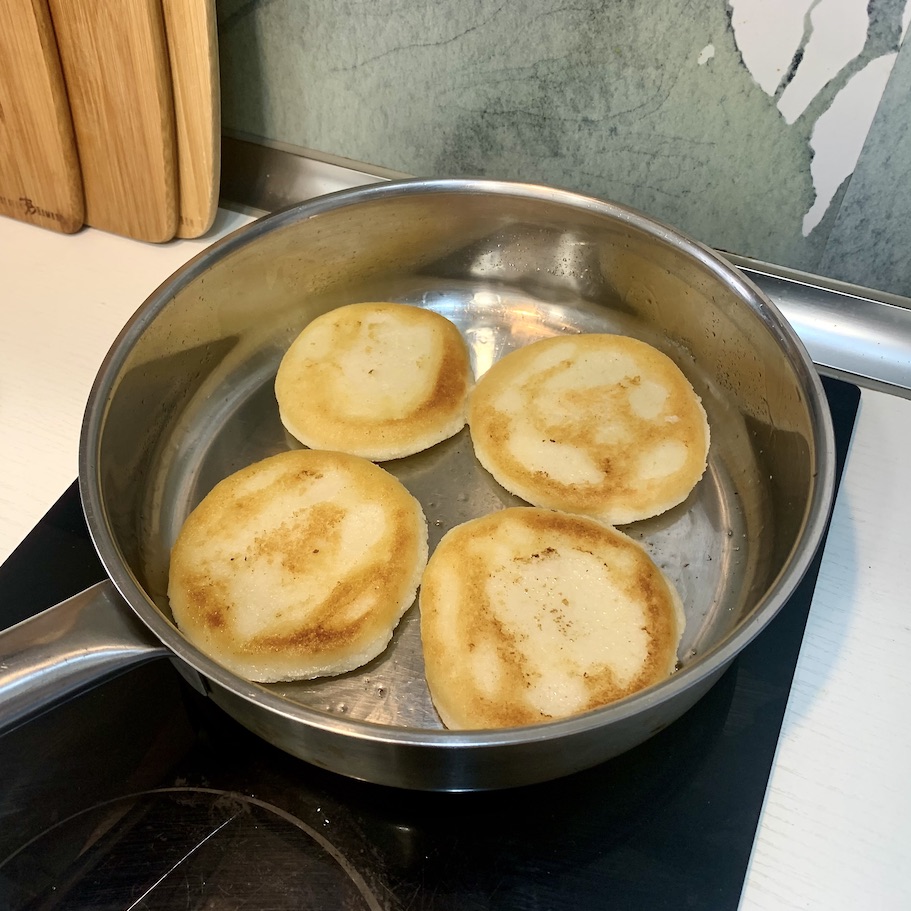
The cost of food here is amazingly wonderful. So many fresh ingredients for very little money. However, if something is out of season, you might not find it. Those scrumptious donut peaches are only available for a limited time and people know it. The second they show up at the market, there is a rush to purchase and people are talking all about it. Did you see donut peaches are in season!?! Yes I did!
Are there any local liquors in Portugal?
While researching port wines in Peniche, most people also talk about this cherry liquor that is popular in Lisbon, known as ginjinha, or just ginja. It’s a bit sweet for me, but it is really amazing over ice-cream. Let me tell you! My friends let me try this delectable treat at their place after a wonderful dinner. Thanks again, Friends!
What I discovered and really enjoyed was the Beirão liquor. If you don’t like black licorice, you won’t like this. It has this lovely sweet anise taste. I bought a bottle and slowly devoured it over the course of a couple of days. I decided it was too delicious to just leave around the house and is only for special occasions where others can help me consume it. Smart!
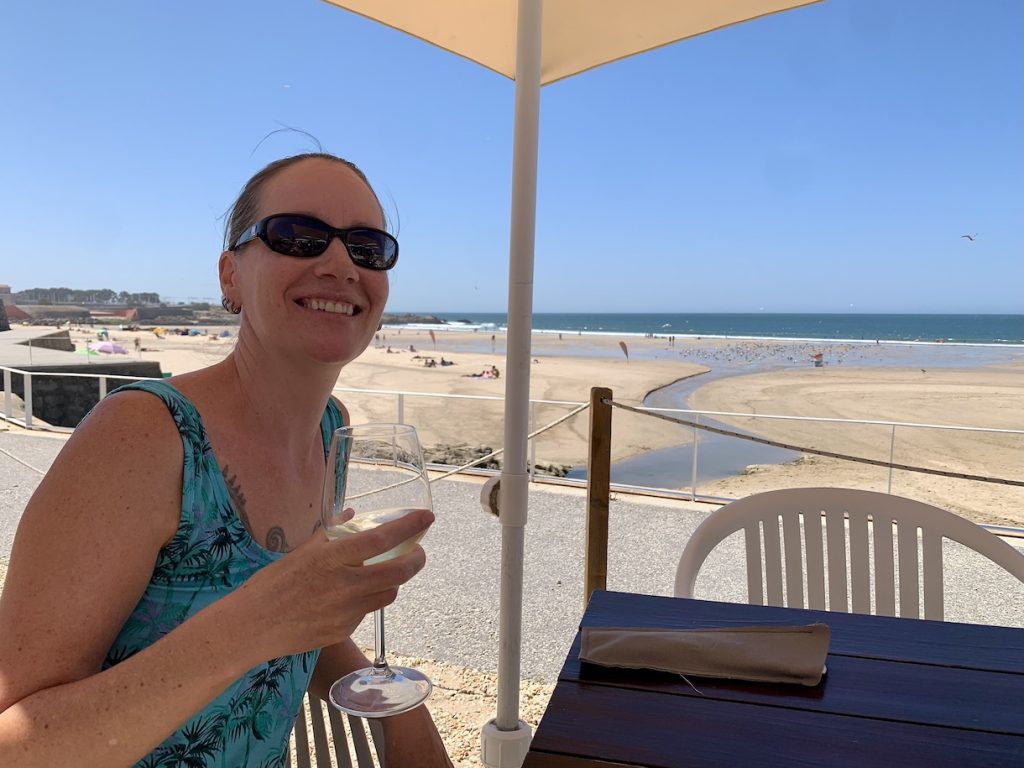
Both hard liquor and wine are very affordable in Portugal. If you want something specific from the States or México, it will cost more due to all the costs of shipping and importing. I like to stick with what’s local whenever possible. I’ll drink that tequila while I’m in México and rum in the Caribbean. Currently, I’m enjoying Seattle hard ciders and seltzers.
Other interesting tidbits
While fresh food was incredibly affordable in Portugal, eating out was still on the spendy side. But after traveling to quite a few different countries, I was excited about all the variety that is found in Porto. I went out for Hawaiian poke bowls, Southern Indian (dosas!!!), and Thai for sure. So so good and worth the splurge.
Portugal is not big on really spicy food. I had a hard time finding hot sauces or spicy peppers to make my own. The restaurants really tone down the spice as well to appease their customer base. My friends and I chatted with a server at an Indian restaurant in Peniche and why that is, while asking to please add more spice. He mentioned that if the chef tossed in the normal amount of spice, the smell from a single dish would clear out the restaurant. They learned that in Portugal, less is best.
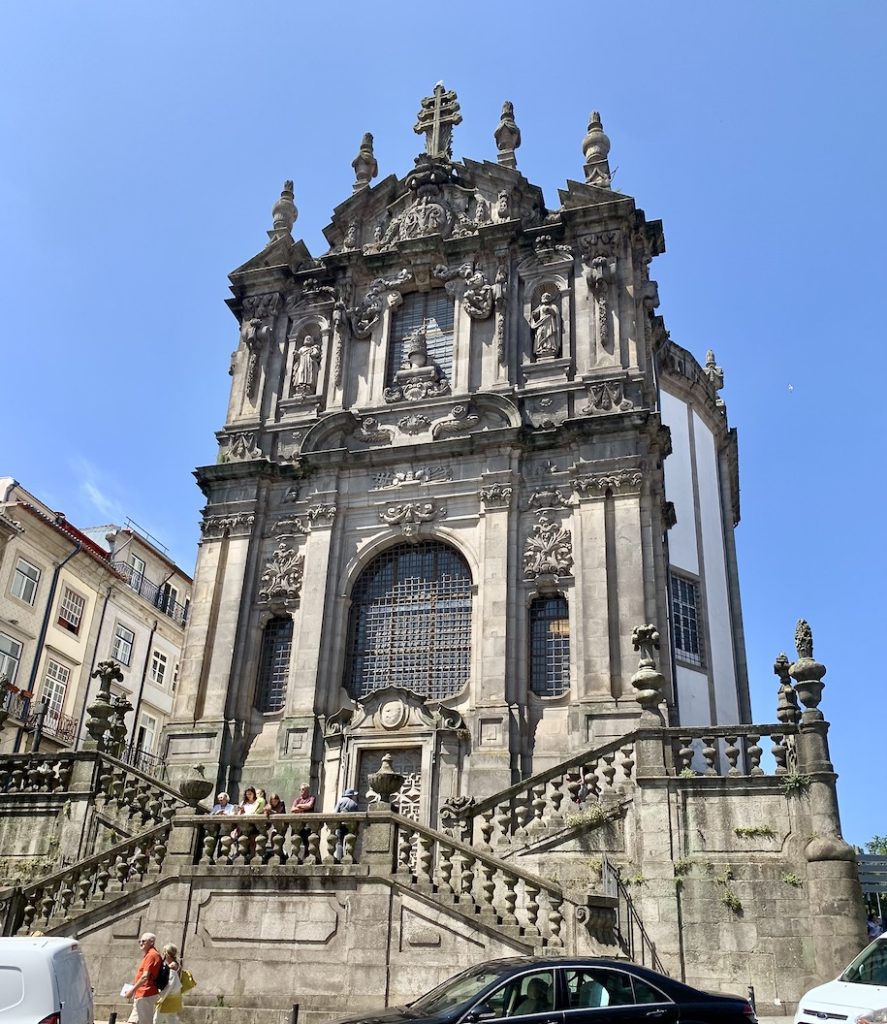
Coffee in Portugal is delicious but comes in tinny-tiny shot glasses. I’m from Seattle. We like our coffee in pint-glasses! Or soup-bowls with handles stuck on that we all pretend are mugs! Plus, both the apartments I rented came with coffee makers that use those weird pod things. However, they also came with electric water kettles. Love those things! I switched to instant coffee and was not disappointed. Noms!
Neither of my apartments came with ovens, which was interesting, to say the least. I can’t exactly bake my own gluten-free bread with no oven. They also only came with dorm-size small refrigerators. This sounds fairly common because people just shop each day for small amounts of food and eat fresh. I got pretty good at this, but it took some planning. You just gotta roll with it.

